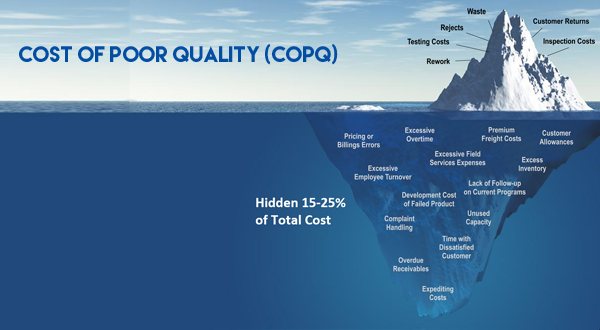
How would an Annual Report look if we included the Cost Of Poor Quality (COPQ) as a distinct head? Would our banks like this disclosure? For their customers? And perhaps, themselves?
It would certainly be embarrassing for the Managing Directors and/or the Boards of Directors of businesses in the private and public sectors. COPQ examples could be: incoming inventory, WIP inventory, finished goods inventory, etc. Should banks give loans against inventory?
Also, taxpayers would be rebellious if the COPQ of municipalities, as well as state governments were reported. Examples: Pot holes repair, complex inefficient procedures, absenteeism, idle time, etc. Why should our hard earned money support such tragic symptoms?
The COPQ ranges from 20% to 40% of total costs in any organization! These costs are buried in the budget. In serpentine cross-functional processes.
The killer process is typically purchasing. A cross-functional process. It accounts for approximately half the COPQ. Be it in manufacturing or services. Private or government.
The solution to this problem requires that the Purchasing Department shift its policy of selecting the lowest cost supplier to the one with the best process capability. The downstream advantages from the latter approach are significant if not dramatic. Think Maruti.
The other hatchery for COPQ is logistics. This accounts for another 10-15% COPQ. The solution to this problem is complex. Design a digital solution involving a web of warehouses, transportation, and gentle delivery personnel. Think Amazon.
In hospitals, improvements in the admissions process coupled with the discharge process can actually double the capacity! Patients are burdened with the COPQ of capacity under utilization in spite of huge demand!
We need to correct these chronic inefficiencies in our organizations. We seek independence from COPQ!
CREDITS: Suresh Lulla, Founder and Mentor, Qimpro Consultants Pvt. Ltd.